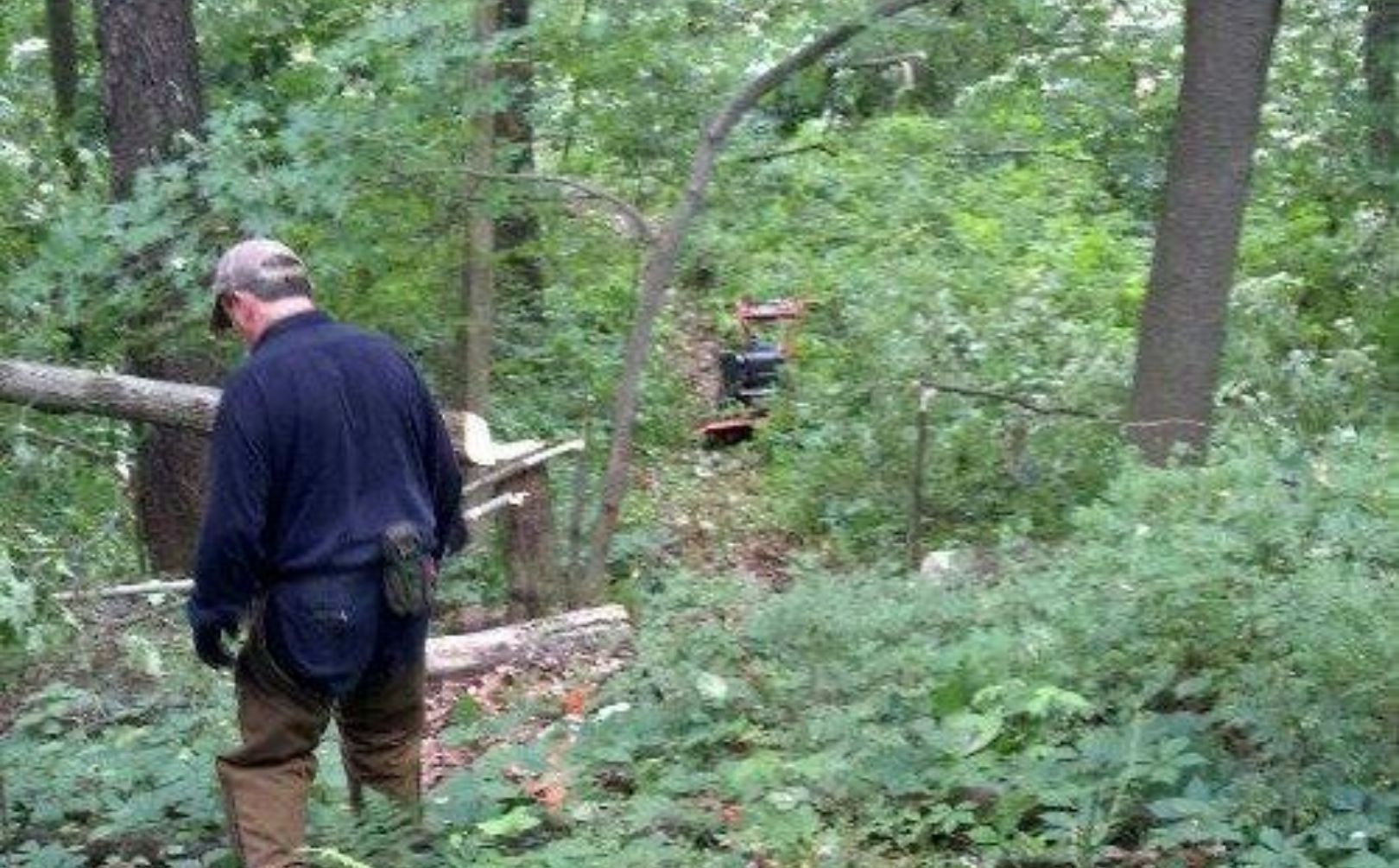
Check out my latest article for creating “Chainsaw Travel Corridors” for deer.
From Delaware to Nebraska and most deer habitats north, for the first 7 months of 2013 I enjoyed the incredible variety of both deer parcels and my clients that hunt on those parcels! EHD, hornets, chainsaws, wounds, snakes, snow and temperatures differences of over 100 degrees are the norm during the season and mother nature seemed to pick 2013 to show her extremes. I had the pleasure of working with a particular client from southern MI while designing his 40 acre parcel.
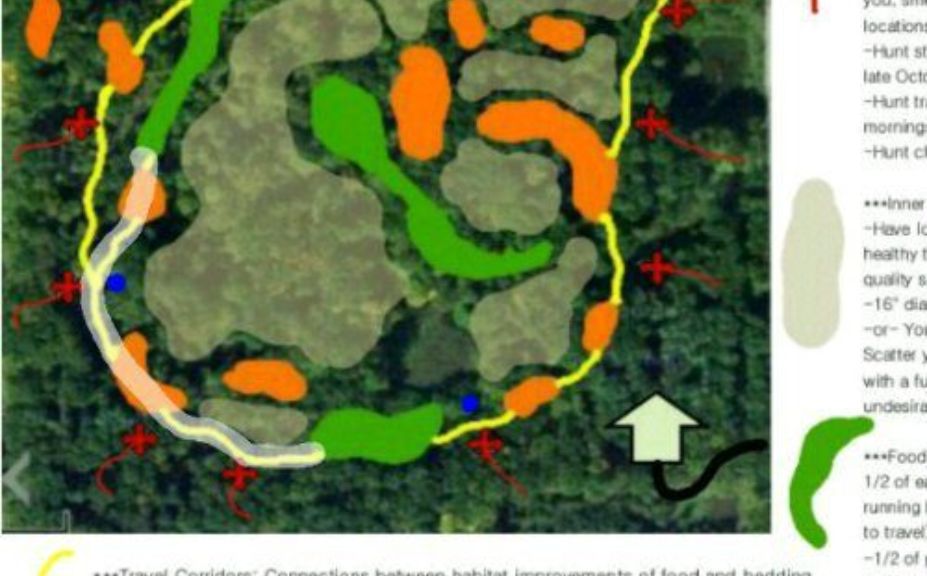
My client’s parcel features a great deal of variety in a small package! 20-40′ elevation changes roll from front to back and side to side to form an almost
“burmed” valley of smaller hardwood ridges within the center of the parcel to include about roughly 25 acres that are completely hidden while walking the exterior borders. Bedding areas (orange) were recommended to be cut and created on interior facing benches, points, or ridge tops so that bedded deer could be hidden and facing away from hunters while accessing along the parcel borders. Food plots (green) were located to be just as hidden and secure as the bedding areas (a must) and by using travel corridors (yellow) to “connect the dots” of high quality improvements, stand locations (red x with trail access) could be located within intersections that feature a high-level of predictable use. By adding much needed waterholes within some of the “high and dry” ridge areas, the travel patterns could be even further enhanced to not only offer some exceptional ambush locations, but to keep hunters from spooking deer while accessing stand locations through “non-improved” habitat with the wind and time of day to their advantage. The bedding areas include 1/2 acre to 1 acre virtually complete clearcuts that include several “pockets” of 5-10 feet in diameter surrounded by a web of trails to connect each one to the next within the entire cluster of downed timber. Within the large, interior portion of the parcel the canopy was recommended to be reduced to 50% or less by cutting mature “cull” trees and low timber-value species designed to drastically improve both the amount of cover, and food across the entire parcel. By keeping the best of the improvements towards the exterior of this parcel, the table was set for the installation of over 1000′ of travel corridors running parallel to the parcel borders to influence the deer to move within the border parcels, and not off of the parcel borders. I typically attempt to keep from pointing improvements towards any parcel borders because each improvement serves as one giant “arrow” of deer movement, meaning; once a deer gets pointed in 1 direction, it’s often hard to get him to stop!
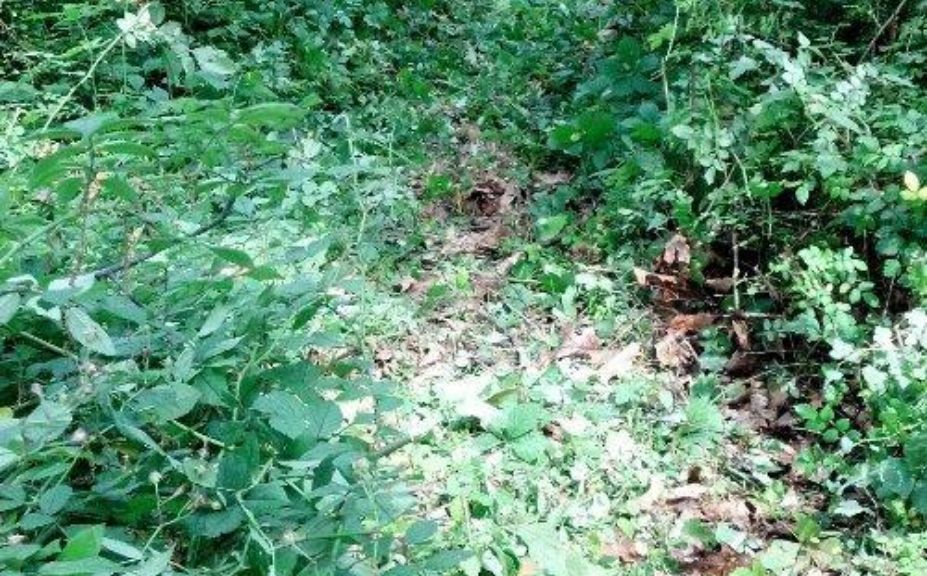
My initial client visit was in early February, and the client then hired me to come back in mid-July for some follow-up chainsaw work. The temperatures were hot, the habitat thick and full of bugs, and we both (several times each) found the hornets to be extremely agitated at the seemingly destructive nature of our activities!
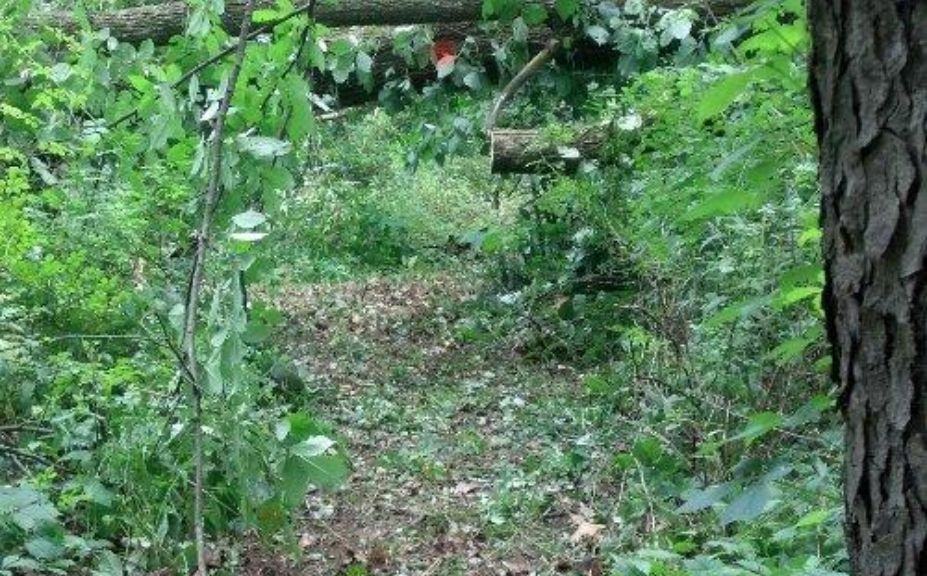
To begin with the 4-day cutting project that would include the travel corridors, several bedding areas, and food plot trails, the most mature of cull-trees were selected to drop safely to the forest floor. Although I personally use a helmet, eye protection, ear protection, and cutting chaps I typically seem to manage one or two scrapes, bumps or bruises as seen in the initial picture from this article. The most mature of trees are dropped first, and are cut to fall into holes or openings within the forest to create more holes to continue cutting into. When trees are available to cut to the outside of the intended travel corridor, they are cut last, and hinge-cut low to be used as blocking debris to further define the intended deer movements. Existing deer trails, and the benches, saddles and natural funnels present within the “lay of the land” can be used and even “painted” to act as a visual aid in cutting.
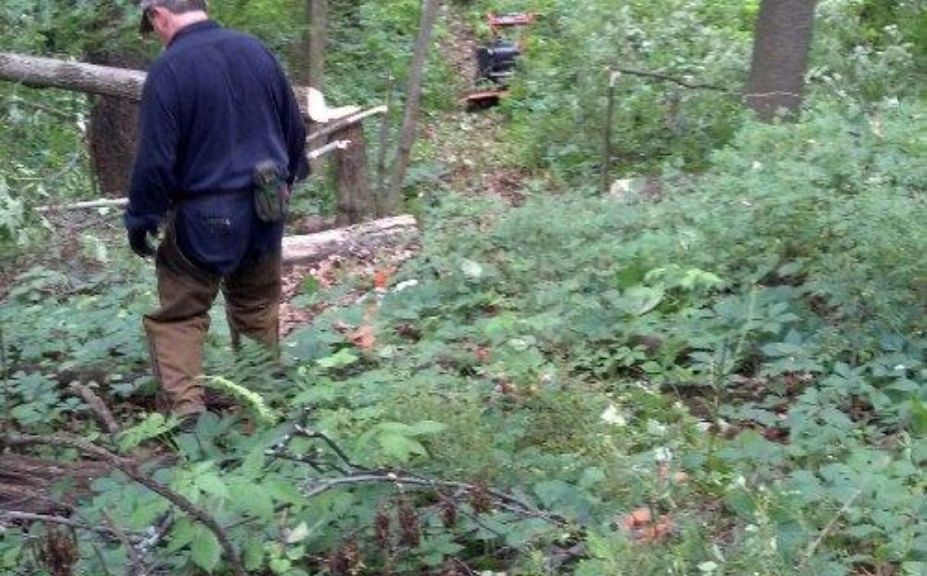
Once the intended travel corridor has been cut, cleared of large debris, and defined, a machine such as a DR brush-trimmer can be used to clear a virtual “bike path” of a potential deer trails complete with a follow-up spraying of a ground-clearing herbicide such as Pramitrol 25E to eventually form a “single-track” deer trail from “Point A” to “Point B”. Taking a look at the included parcel design, note the highlighted white portion of the intended “line of movement” including food, travel corridor, water, stand locations, and bedding areas located in the SW corner. Although the entire 40 acre line of deer movement was completed, this is the portion of the parcel that the pictures used within this article were taken from.
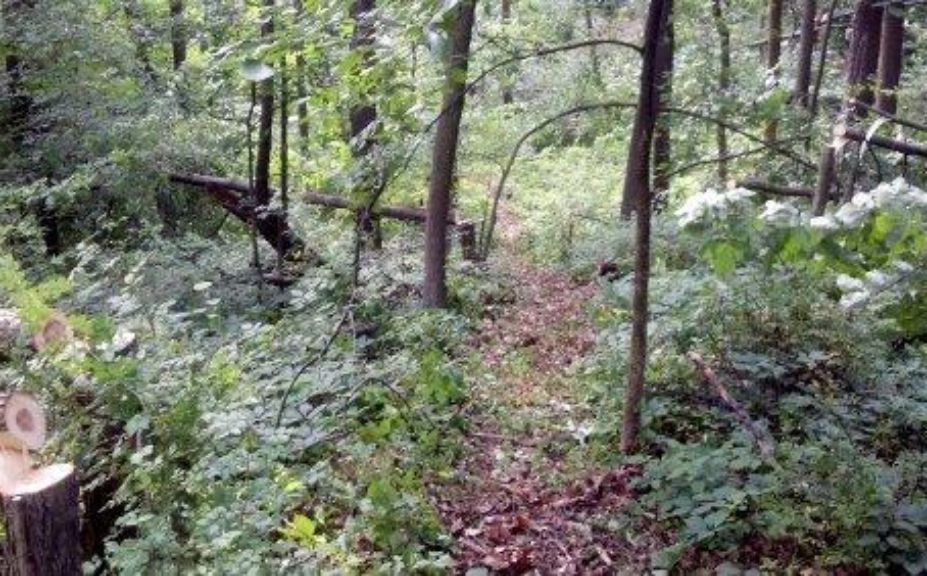
Of course, the travel corridor is primarily used to set-up high quality stand location opportunities and this corridor is no exception! In the following photo, you can just start to see the opening that the corridor is eventually running into, heading in a northerly direction. A future stand location is located just to the left of the corridor approximately 25 yards away and behind a wall of cuttings to conceal access and departure to the stand. The opening that the corridor is running into is actually a newly created “Trail Food Plot” approximately 15-20′ wide and over 400′ long. Also, within bow-shot of the stand location, a 110 gallon waterhole tank will be intalled to not only further enhance and define the new “deer trail”, but to offer an outstanding spot to kill a deer! Any waterhole I typically recommend to install is in a location to take advantage of deer that are “sitting dry” all day with little to no water, and on the way to evening food source, which makes this spot “perfect” to take advantage of a thirsty monster while bowhunting.
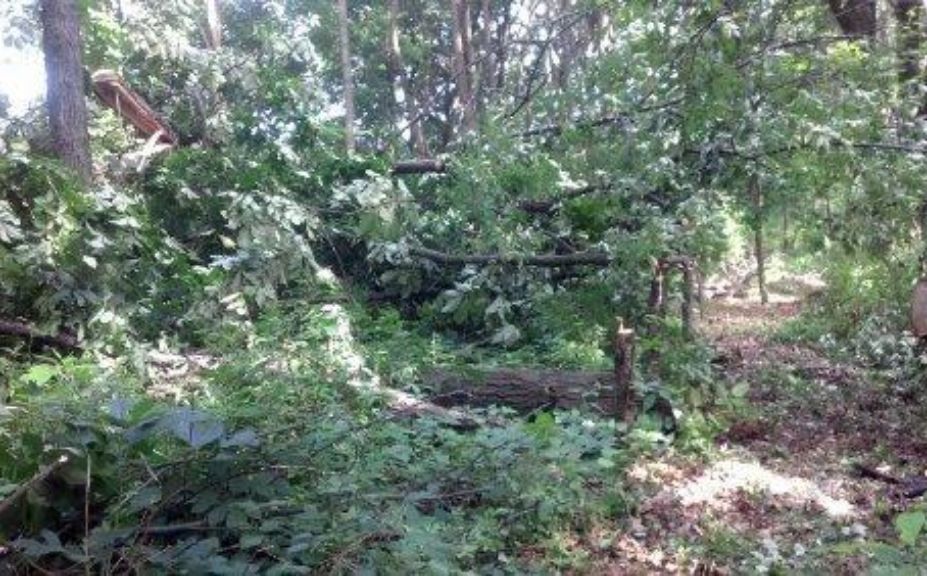
Looking back at where the corridor meets the opening, the tree to be used for the stand location is to the right side of the picture and has been marked with an orange “T”. The access to the stand is from behind the tree and perpendicular to the intended line of deer movement. A long pile of fallen trees will successfull block the hunter’s access to the stand, and keeps deer away from hunter-scented hand-rails and climbing steps. The waterhole will be placed just about where I am standing, and to the left, offering a 25 yard shot as deer either exit, or enter the travel corridor from the trail food plot. Because the trail plot is long, winding, and narrow, deer can be expect to travel and feed along the entire length, making access for morning hunts possible with a low probability of bumping feeding deer within “spooking” range. At the same time, evening hunts will feature great, “deer-free” access as deer can be counted on to be located within adjacent, hidden bedding areas positioned to take advantage of the both the travel corridor and the overall created line of deer movement.
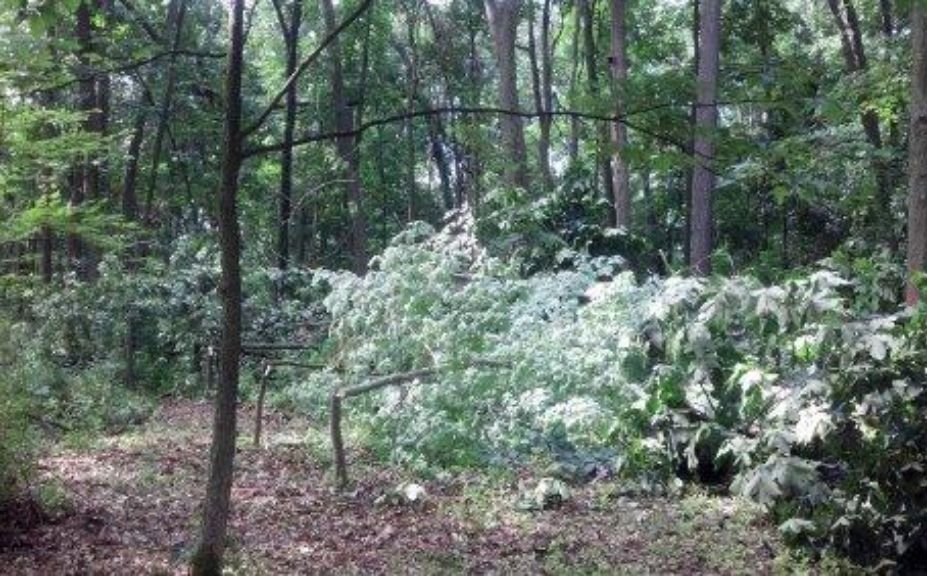
Of course, the travel corridor is primarily used to set-up high quality stand location opportunities and this corridor is no exception! In the following photo, you can just start to see the opening that the corridor is eventually running into, heading in a northerly direction. A future stand location is located just to the left of the corridor approximately 25 yards away and behind a wall of cuttings to conceal access and departure to the stand. The opening that the corridor is running into is actually a newly created “Trail Food Plot” approximately 15-20′ wide and over 400′ long. Also, within bow-shot of the stand location, a 110 gallon waterhole tank will be intalled to not only further enhance and define the new “deer trail”, but to offer an outstanding spot to kill a deer! Any waterhole I typically recommend to install is in a location to take advantage of deer that are “sitting dry” all day with little to no water, and on the way to evening food source, which makes this spot “perfect” to take advantage of a thirsty monster while bowhunting.
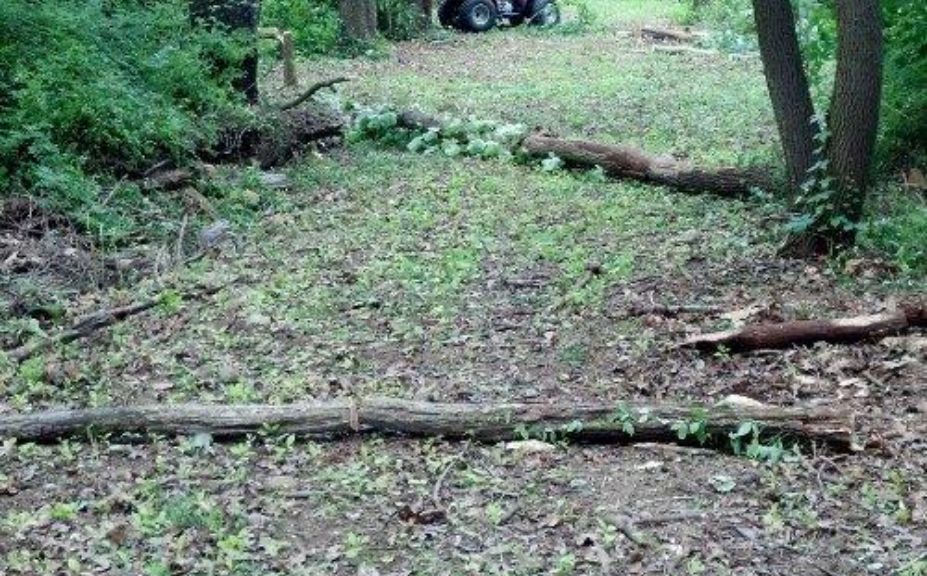
With more cutting creation clients scheduled for later during the summer in WI, a speaking event in MO in August, as well as additional site-visits scheduled through mid-December in MI, WI, and MN the season has slowed down a little…but not much! The slow-down is great though, allowing me to spend many days with my children as we swim, bike, hike and play ball throughout the summer. Come to think of it, even when I slow-down, the majority of my activities are outdoors, and I continue to feel extremely blessed to have the career that I do…even with the extremes of mother nature thrown in for variety!